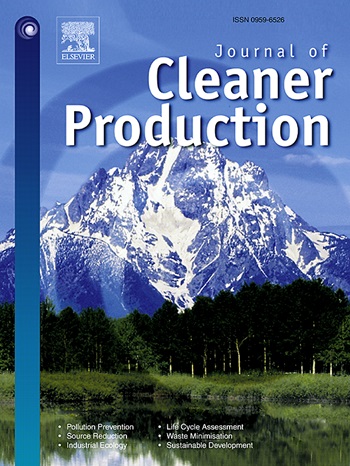Synergistic mitigation potential of carbon and air pollutants in China's cement industry:A perspective from material-energy flows
IF 9.7
1区 环境科学与生态学
Q1 ENGINEERING, ENVIRONMENTAL
引用次数: 0
Abstract
Cement industry plays a pivotal role in achieving the carbon neutrality target and air quality improvement in China. However, how low-carbon and ultra-low emission technology transformation synergistically affects carbon and air pollutant emissions remains unclear. Here, coupling the material-energy flow, we developed an integrated assessment framework to track carbon and multiple air pollutants coupling flows in China's cement industry. The whole-process estimates of CO2eq, Hg, SO2, PM2.5, NOx, and VOCs were 9 %–60 % higher than those reported in most previous studies, which may be mainly due to the newly included emissions from mining, transportation, power use, and waste co-processing. Noteworthy, the national cement trade does not help the reduction of national CO2eq and air pollutants emissions, but enhanced their emissions. We identified Fujian, Jiangsu, and Zhejiang provinces as the major importers of cement product, responsible for transferring over half of their user-based emissions to cement bases. By 2060, China's cement industry was expected to reduce 1262 Mt-CO2eq, 101 t-Hg, 611 kt-SO2, 598 kt-PM2.5, 1167 kt-NOx, and 429 kt-VOCs, respectively. Remarkably, raw materials has limited co-control reduction potential. By contrast, fuel substitution and energy efficiency improvements totally contributed to 27 % of CO2eq emission reduction and 15 %∼43 % of multiple air pollutants reduction, respectively, which constituted the keys to achieve the synergistic mitigation of carbon and multiple air pollutant emissions in the future.


中国水泥行业碳和空气污染物的协同减排潜力:来自物质-能量流的视角
水泥行业在中国实现碳中和目标和改善空气质量方面发挥着关键作用。然而,低碳和超低排放技术改造如何协同影响碳和大气污染物排放仍不清楚。在这里,耦合物质-能量流,我们开发了一个综合评估框架来跟踪中国水泥行业的碳和多种空气污染物耦合流。CO2eq、Hg、SO2、PM2.5、NOx和VOCs的全过程估计值比以往大多数研究报告的估计值高出9% - 60%,这可能主要是由于新纳入了采矿、运输、电力使用和废物协同处理等排放。值得注意的是,全国水泥贸易并没有帮助减少国家二氧化碳当量和大气污染物的排放,反而增加了它们的排放。我们确定福建、江苏和浙江是水泥产品的主要进口国,负责将超过一半的用户排放转移到水泥基地。到2060年,中国水泥行业预计将分别减少1262亿吨二氧化碳当量、101亿吨汞、611亿吨二氧化硫、598亿吨pm2.5、1167亿吨氮氧化物和429亿吨vocs。值得注意的是,原材料的共控减排潜力有限。相比之下,燃料替代和能源效率的提高分别贡献了27%的二氧化碳当量减排和15% ~ 43%的多种空气污染物减排,这是未来实现碳和多种空气污染物排放协同减排的关键。
本文章由计算机程序翻译,如有差异,请以英文原文为准。
求助全文
约1分钟内获得全文
求助全文
来源期刊

Journal of Cleaner Production
环境科学-工程:环境
CiteScore
20.40
自引率
9.00%
发文量
4720
审稿时长
111 days
期刊介绍:
The Journal of Cleaner Production is an international, transdisciplinary journal that addresses and discusses theoretical and practical Cleaner Production, Environmental, and Sustainability issues. It aims to help societies become more sustainable by focusing on the concept of 'Cleaner Production', which aims at preventing waste production and increasing efficiencies in energy, water, resources, and human capital use. The journal serves as a platform for corporations, governments, education institutions, regions, and societies to engage in discussions and research related to Cleaner Production, environmental, and sustainability practices.
 求助内容:
求助内容: 应助结果提醒方式:
应助结果提醒方式:


